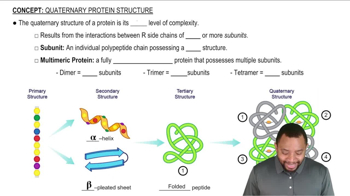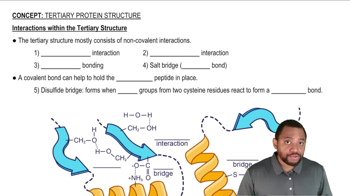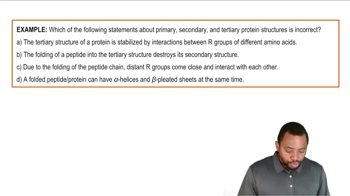Indicate whether each of the following statements describes primary, secondary, tertiary, or quaternary protein structure:
c. Several polypeptides in a beta-pleated sheet are held together by hydrogen bonds between adjacent chains.
 Verified step by step guidance
Verified step by step guidance Verified video answer for a similar problem:
Verified video answer for a similar problem:



 2:56m
2:56mMaster Summary of Protein Structure Concept 1 with a bite sized video explanation from Jules
Start learning